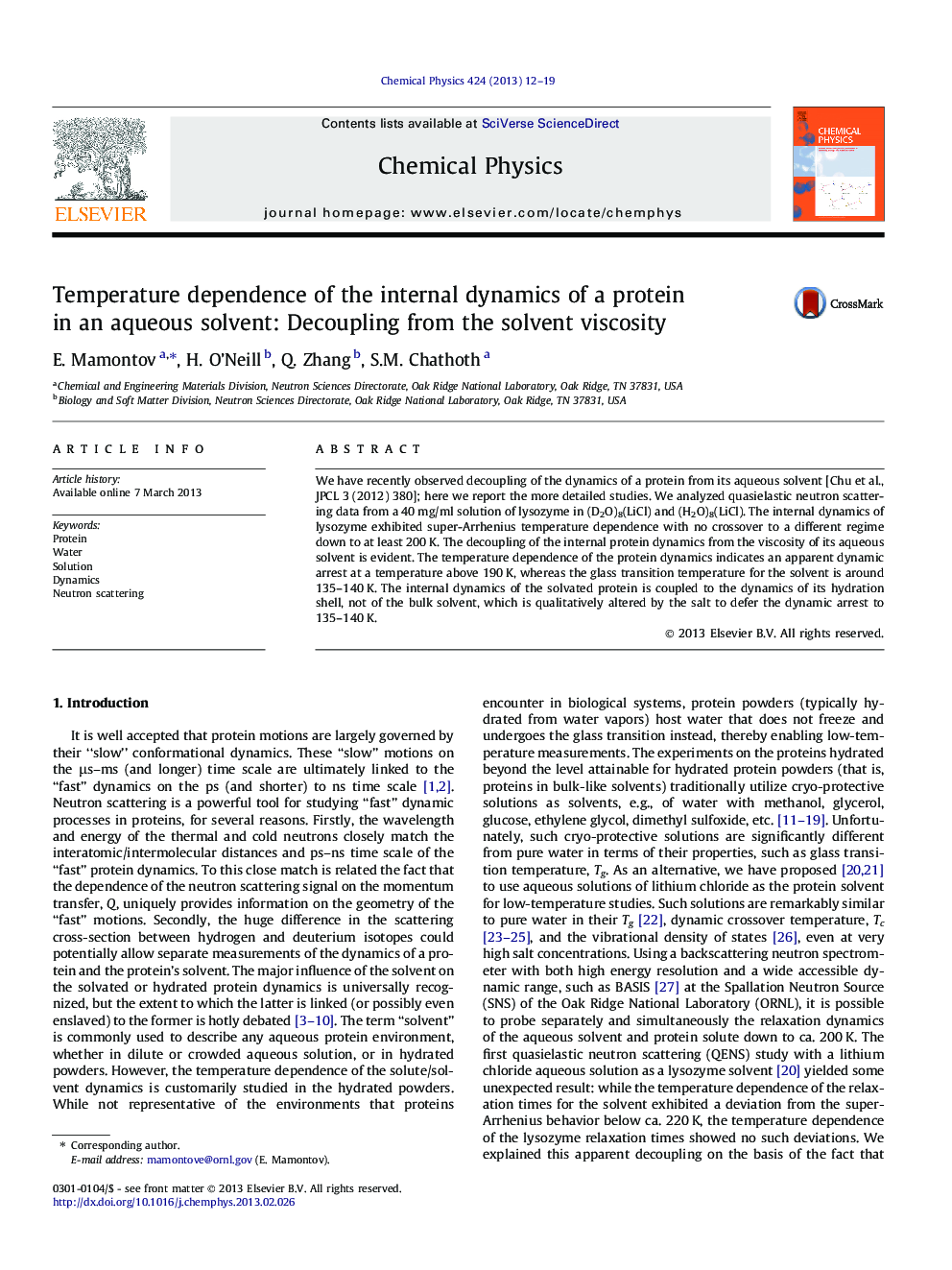| Article ID | Journal | Published Year | Pages | File Type |
|---|---|---|---|---|
| 5373844 | Chemical Physics | 2013 | 8 Pages |
We have recently observed decoupling of the dynamics of a protein from its aqueous solvent [Chu et al., JPCL 3 (2012) 380]; here we report the more detailed studies. We analyzed quasielastic neutron scattering data from a 40Â mg/ml solution of lysozyme in (D2O)8(LiCl) and (H2O)8(LiCl). The internal dynamics of lysozyme exhibited super-Arrhenius temperature dependence with no crossover to a different regime down to at least 200Â K. The decoupling of the internal protein dynamics from the viscosity of its aqueous solvent is evident. The temperature dependence of the protein dynamics indicates an apparent dynamic arrest at a temperature above 190Â K, whereas the glass transition temperature for the solvent is around 135-140Â K. The internal dynamics of the solvated protein is coupled to the dynamics of its hydration shell, not of the bulk solvent, which is qualitatively altered by the salt to defer the dynamic arrest to 135-140Â K.
Graphical abstractDownload full-size imageHighlights⺠LiCl enables low-temperature proteins studies in aqueous solutions without freezing. ⺠Glass transition temperature of aqueous solvent is unaffected by lithium chloride. ⺠Solvent viscosity governs global dynamics of lysozyme down to glass transition arrest. ⺠Lysozyme internal dynamics is decoupled showing dynamic arrest at higher temperatures.
